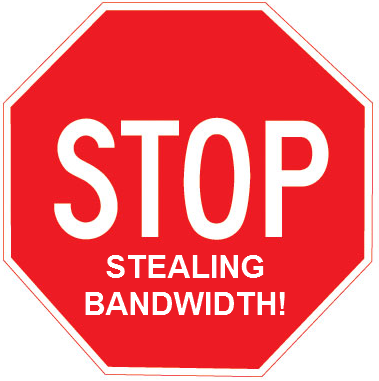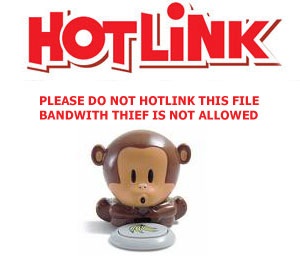Bandwidth Overage Protection - Dedicated ServersSuper Fast Dedicated servers with Custom Configurations - all to yourself and under your command.
Bandwidth Overage Protection shields you from bandwidth overage charges by automatically suspending your account when its allotted bandwidth is exceeded. Reinstatement occurs at the start of your next billing cycle or when additional bandwidth is purchased. Bandwidth Overage Protection cannot be added to an account when it is already over its allotted bandwidth. When an overage occurs, you can suspend your account manually or purchase additional bandwidth. |
|
|
What is hotlinking and bandwidth theft?
Hotlinking is actually stealing your server's bandwidth by showing content from your website on their own website like videos or pictures. Example, these websites can use <img> tag for showing your images or videos on their blog or portal or shopping website or a form post. If that forum is a popular one and gets thousands of hits then it will steal all your bandwidth and web-hosting company can even suspend your account for overusing server resources. This results into making your website unavailable for considerable amount of time. Bandwidth actually refers to the total amount of Data Transfer that your website or server can use to send or receive data from your visitors. This bandwidth is expensive as it run on leased lines and sometimes multiple websites share the same lines and hardware. Therefore your website can impact other business websites. Whenever your visitor views any page or image from your website they use a fraction of bandwidth from your quota. |
Some of SEO experts says that hotlinking actually improves the search engine ranking for your websites. So if you have plenty of bandwidth than there is actually no harm in allowing it.
|
How Do I Stop Hotlinking and Bandwidth Theft?
There are multiple ways to stop hotlinking. Some of the webhosting companies allow this settings in cPanel itself. If there is no cPanel then you can also use .htaccess file. cPanel Method to Stop Hotlinking cPanel can prevent hotlinking by only allowing listed sites (such as your own web site) to access files on your site. To prevent hotlinking: 1. Click on the HotLink Protection button on the home page. 2. Enter any other addresses that you will allow to access your site other than the provided defaults in the central area. 3. Enter the protected extensions in the Extensions to allow field. Make sure you separate each extension with a comma. 4. Enter the address to redirect any hotlinking to in the Url to Redirect to field. 5. Click on the Allow direct requests tick box if you want to allow direct URL access to non-HTML files, such as images. 6. Click on the Activate button. .htaccess Method to Stop Hotlinking You can stop others from hotlinking your site's files by placing a file called .htaccess in your Apache site root (main) directory. The period before the name means the file is hidden, so you may want to edit your file as htaccess.txt, upload it to your server, then rename the txt file to .htaccess in your directory. Contact your web host on how to access your directories and configure your .htaccess file. Example: Your site url is www.mysite.com. To stop hotlinking of your images from other sites and display a replacement image called qX4w7.gif from an image host, place this code in your .htaccess file: RewriteEngine On RewriteCond %{HTTP_REFERER} !^http://(.+\.)?mysite\.com/ [NC] RewriteCond %{HTTP_REFERER} !^$ RewriteRule .*\.(jpe?g|gif|bmp|png)$ http://i.imgur.com/fy6NFfy.png [L] To stop hotlinking from specific outside domains only, such as myspace.com, blogspot.com and livejournal.com, but allow any other web site to hotlink images: RewriteEngine On RewriteCond %{HTTP_REFERER} ^http://(.+\.)?myspace\.com/ [NC,OR] RewriteCond %{HTTP_REFERER} ^http://(.+\.)?blogspot\.com/ [NC,OR] RewriteCond %{HTTP_REFERER} ^http://(.+\.)?livejournal\.com/ [NC] RewriteRule .*\.(jpe?g|gif|bmp|png)$ http://i.imgur.com/fy6NFfy.png [L] |
|









